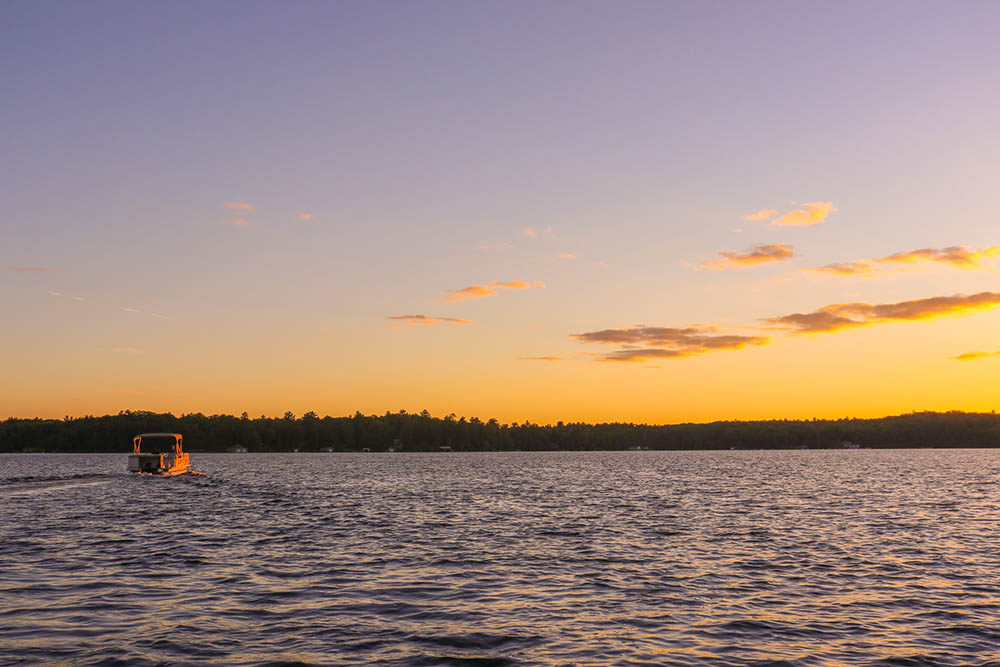By Sara Abdi
As the warmer weather approaches the Muskoka community starts preparing for all the fun water activities they will be participating in this summer. From swimming in the lake to catching waves on the tube there is a water activity for everyone. As much fun as the water and these activities can be, we must remember that they can be dangerous as well, and there are necessary precautions we must take to have a safe and fun summer. We at Lakeland Networks want to keep our community safe and educate the members of our community on the importance of water safety. We will be going over potential risks and water safety tips to keep in mind while boating or participating in water sports.
It is important that before we take part in water activities, we understand the risks that come with them. We would like to highlight 6 different risks that the community should be aware of:
- The first risk is drowning. Drowning can occur when participating in any water related activity. This can be due to many reasons such as inadequate swimming skills, lack of supervision, alcohol consumption, or not wearing a personal floatation device (PFD).
- The second risk is freezing water hazards. In the Muskoka region we experience freezing water temperatures in the early spring and late fall. We must be careful during this time of year as a fall into the freezing water can lead to hypothermia, and the sudden immersion into freezing water itself can shock the body and impair swimming abilities.
- The third risk is boating accidents. The lakes are a popular destination for boating and water sports; however, this increases the chances of accidents. We must be vigilant while operating water vehicles and follow the rules and regulations by not speeding, driving recklessly, or allowing inexperienced or unlicensed drivers to handle the vehicle unsupervised. Collisions, falls overboard, and capsizing are all common causes of boating accidents.
- The fourth risk is hidden hazards. We must be aware that there are underwater obstructions, submerged rocks or tree trunks that can pose risks to swimmers, boaters, or water skiers.
- The fifth risk is changing weather conditions. We can all agree that the weather can be very unpredictable and bring about sudden changes. Sudden storms and intense winds can create hazardous conditions on the water. It is important to exercise caution during adverse weather conditions.
- The last risk is inadequate supervision. Children and inexperienced swimmers should always be closely supervised while near or in the water. Lack of supervision can increase the risk of accidents and drowning incidents.
Boating Safety
While boating is fun and a popular activity during the summer months, we must be aware of how to be safe while boating and participating in boating activities. It is important that we always wear a life jacket. We need to be wearing a properly fitting PFD while on board, and must ensure that everyone on the boat has a suitable and accessible life jacket. Once again, boating regulations must be followed for everyone’s safety. It is imperative to familiarize yourself with local boating regulations, including speed limits, navigation rules, and specific rules for water bodies. There must be safety equipment on board, including a throwable flotation device, a sound signaling device (such as a whistle), a fire extinguisher, and a first aid kit. A crucial factor in boating safety is maintaining situational awareness. We must pay attention to our surroundings, including other boats, swimmers, and potential hazards. We must also stay vigilant on the changing weather conditions, navigational markers, and the water depth. Always have a designated sober operator.
Water Sports Safety

To continue having fun while participating in water sports we must be safe to avoid accidents and injuries. It is important that we use the appropriate safety gear such as a properly fitting life jacket or PFD. As previously mentioned, we must remain aware of the weather conditions, it would be a promising idea to check the potential conditions before heading out and if there is a sudden change seek shelter as the weather deteriorates. When participating in these activities, we want to stay within our skill level. Try water sports that match your abilities to avoid accidents and injury. Stay cautious of underwater hazards, pay attention to your surroundings such as submerged rocks, shallow areas, or other underwater obstructions. Lastly supervision and communication ensure that someone is always present to supervise water sports activities, especially when children or inexperienced participants are involved. It is important to establish clear communication signals between the boat operator and the passengers to ensure everyone’s safety.
Beach Safety
Who doesn’t love a sunny beach day, packing food, grabbing a book, and enjoying your day lounging by the water? Beach safety is crucial to ensure a safe and enjoyable experience for individuals visiting the Muskoka region or any other beach destination. When possible, we should be choosing to swim in an area that is supervised by lifeguards. You may have noticed that at some beaches the lifeguards use a flag system. The green flag signifies that the water conditions are safe for swimming. The yellow flag is a cautionary flag, which indicates potential hazards such as strong currents; stay vigilant and exercise caution when swimming. The red flag indicates elevated risk conditions such as strong currents or dangerous weather. It is advised to avoid swimming when the red flag is up. It is strongly recommended to avoid alcohol or drugs before or during swimming or water activities. Alcohol and drugs both impair judgment, coordination, and reaction times, increasing the risk of accidents, drowning, or making poor decisions in the water. Whenever possible we want to swim with a friend or family member. Having a swimming friend ensures that someone can call for help or aid in case of an emergency. Lastly, be sure that you are staying hydrated and protecting yourself from the sun. Drink plenty of water and protect your skin from the sun by applying sunscreen, wearing protective clothing, and seeking shade during peak sun hours.
Drowning Prevention
Finally, to keep everyone safe in the water it is important that we are all knowledgeable on drowning prevention and take the appropriate steps towards it. Learning to swim is one of the most effective ways to prevent drowning. People are taught to stay afloat, move through water, and breathe properly, reducing the risk of drowning. Another way to prevent drowning is to supervise children around water. Children should always be supervised when they are near water, even if they know how to swim. Parents and guardians should always remain within arm’s reach of young children. Using lifejackets is essential for non-swimmers or weak swimmers, and they can be lifesaving in an emergency. Always obey posted signs and warnings. Learning Cardiopulmonary Resuscitation (CPR) is a lifesaving technique that can help keep a drowning victim alive until help arrives. While floatation devices like noodles or pool toys can be fun, they should not be relied upon as a substitute for life jackets or supervision. Homeowners with pools should install barriers such as fences or gates around the pool area to prevent young children from accessing the water without adult supervision. Be prepared to respond to an emergency, know how to call for help and be prepared to respond. Keep rescue equipment like life rings or reaching poles near the pool or other bodies of water.

We at Lakeland Networks hope that this posting will be helpful in reminding you or assisting you to understand the importance of water safety. Experience boating, participation in water sports, and using the beach safely. Be safe and enjoy summer on our beautiful lakes.
References
“Water Safety” – Centers for Disease Control and Prevention (CDC)
“Beach Safety” – National Oceanic and Atmospheric Administration (NOAA)
“Boating Safety” – Transport Canada
“Water Safety Tips” – The Lifesaving Society (Canada)
“Drowning Prevention” – World Health Organization (WHO)
“Preventing Drowning: Information for Parents and Caregivers” – American Academy of Pediatrics
“Water Safety Tips for Kids” – Safe Kids Worldwide
“Swimming and Drowning Prevention” – American Red Cross
“Safety Tips for Water Sports” – Adventure Sports Network
“The Importance of Knowing Your Swimming Ability” – United States Swim School Association
